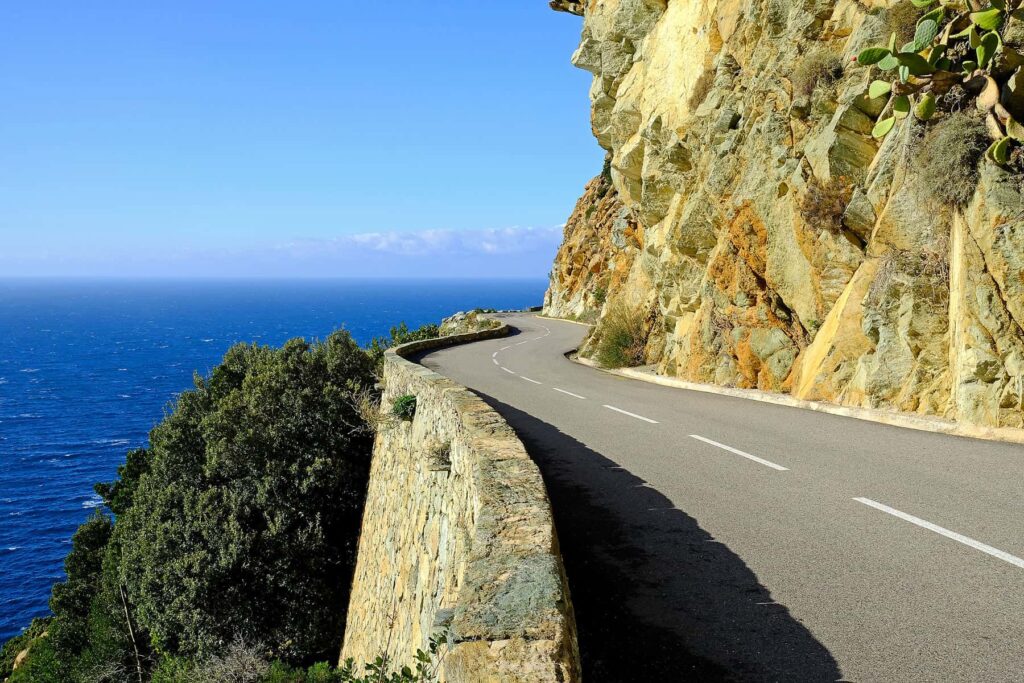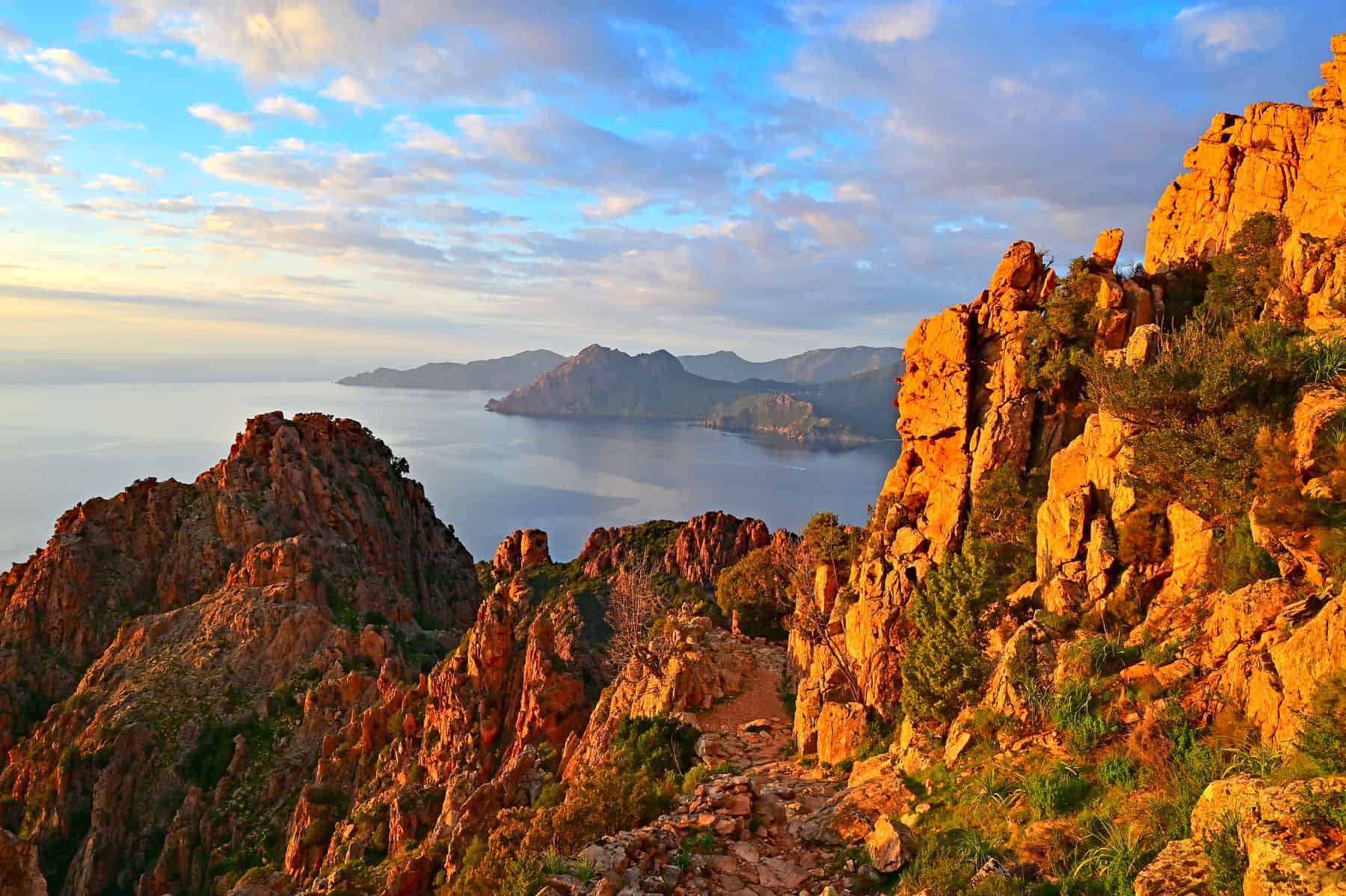
Renting a car in Corsica means the freedom to explore at your own pace- winding coastal drives, dramatic mountain passes, remote villages, and hidden beaches all within reach. It’s the best way to experience the island’s wild beauty and venture into hidden corners, far beyond the limits of public transport.
This guide will walk you through every step of the car rental process so you can plan your Corsican adventure with confidence. It starts with a quick overview of the essentials before diving into the details- from legal requirements and picking the right vehicle for the island’s challenging roads to avoiding common pitfalls and driving safely. With these tips, you’ll be ready to hit the road and focus on what matters most- enjoying the journey.
This page contains affiliate links meaning I get a commission if you decide to make a purchase through my links, at no extra cost to you. Click here to learn more.
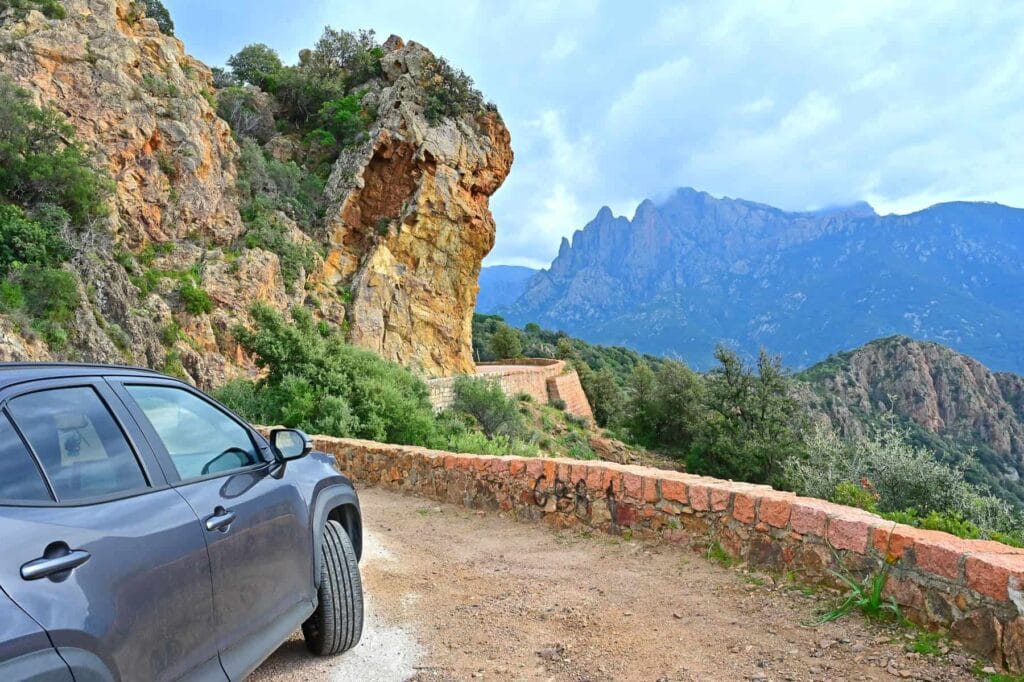
RENTING A CAR IN CORSICA – IN A NUTSHELL
- Rent your car well in advance for the best prices and availability.
- Discovercars.com is a great platform to reserve your rental vehicle in Corsica. It has excellent customer reviews, offers affordable deals on cars, a commonly available free 48h cancellation policy, and a budget-friendly full-coverage insurance.
- The minimum age for driving in Corsica is 18, but car rental companies may have different requirements, such as 21.
- Ensure you have all needed documents- a valid driver’s license (and for non-European citizens, its translation if it’s not issued in French, or an International Driving Permit) held for at least one year, a valid passport or a photographic National ID Card (for EU citizens), and a credit card with sufficient funds (or a debit card, depending on the provider) in the name of the main driver.
- Pick a highly-rated rental car supplier (8+).
- If possible, choose a smaller car, more suitable for the narrow Corsican roads and limited city parking.
- Beware of the ‘limited mileage’ option and choose ‘unlimited’ if you are planning road trips in Corsica.
- Select a full-coverage insurance option for peace of mind.
- Download an EV charging app (e.g. Chargemap, PlugShare, E-motum, PlugSurfing) if you choose an electric car. They often display real-time charging station availability, making trip planning easy and stress-free.
- Check your car for equipment required in Corsica (a warning triangle and a high-visibility jacket).
- Thoroughly inspect and photograph the car exterior and interior at pick-up and drop-off for scratches, marks and dents.
- Always read the small print of your rental conditions.
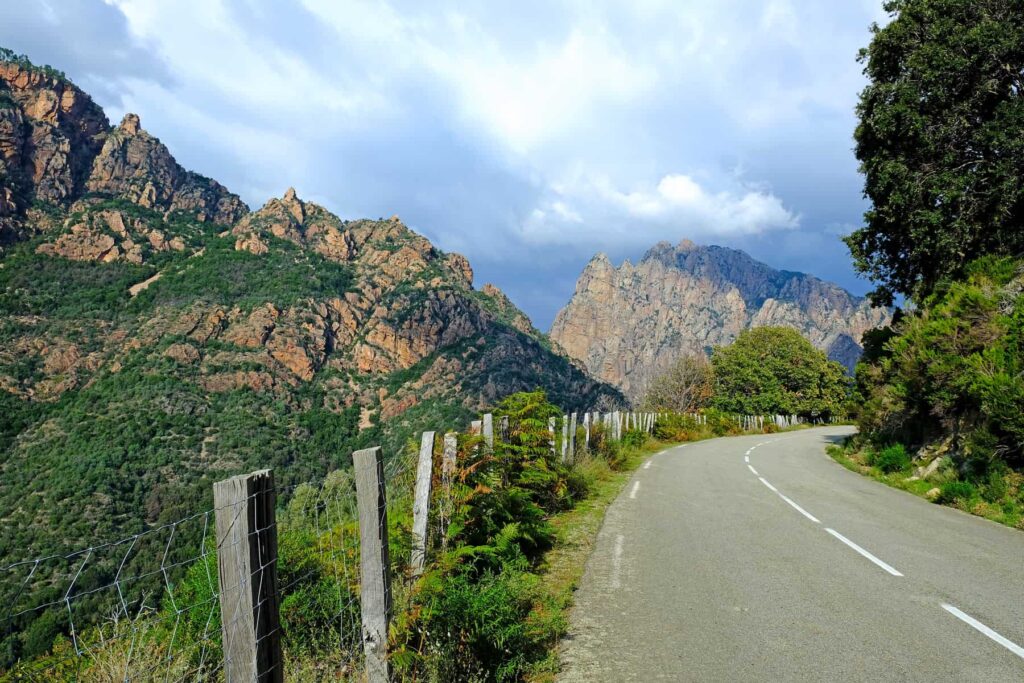
WHY YOU SHOULD RENT A CAR IN CORSICA?
- You will have complete freedom to explore the island at your own pace, stopping in your preferred locations for as long as you wish.
- Corsica’s most beautiful corners are hard to reach on public transport. Your own four wheels will assure access to hidden gems and off-the-beaten-track locations.
- A rental car allows quick and easy transfers from airports or ferry ports, avoiding the wait for buses or trains, or stressful itinerary planning.
- Having an empty trunk waiting in the car park makes it easy to shop for mouthwatering Corsican delicacies without worrying about space or quantity.
- Renting a car allows you to select a vehicle type that perfectly fits your needs, whether it’s a compact car for navigating narrow roads or a larger family van for comfort and luggage space.
- With your own means of transport, you can enjoy unforgettable Corsican road trips, some of the best in Europe.
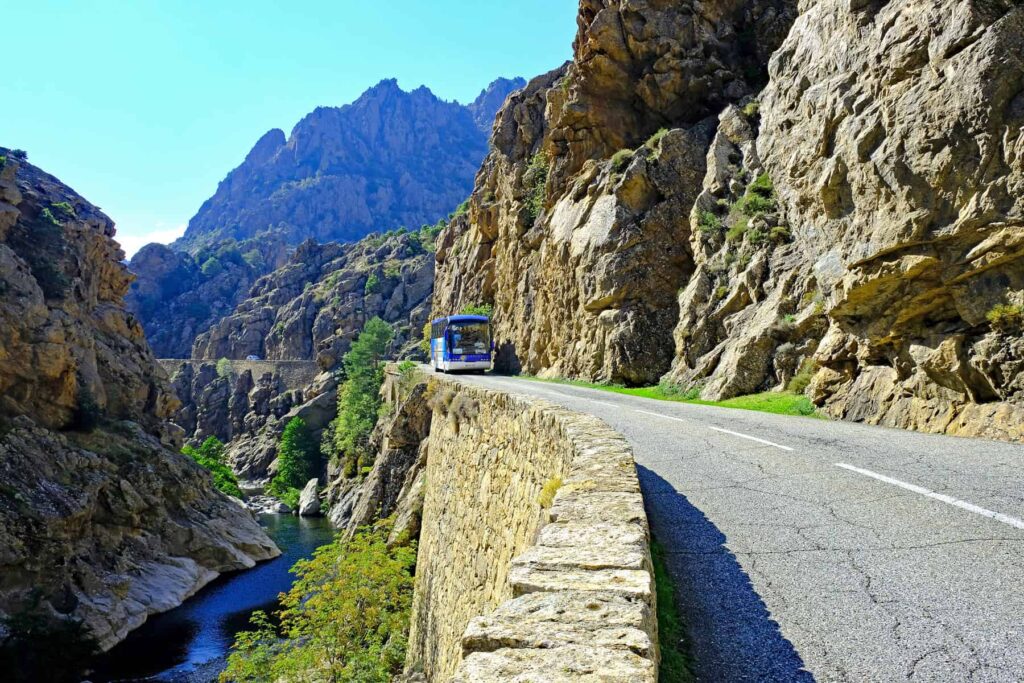
WHAT ARE THE PUBLIC TRANSPORT ALTERNATIVES?
TRAIN
The Corsican railway offers connections between Bastia and Ajaccio, the island’s two major cities. This scenic ride crossing the famous Pont du Vecchio bridge, designed by Gustave Eiffel, grants truly stunning views. The 3-hour journey includes stops at Corte and Vizzavona, with a branch line from Ponte Leccia running to Ile Rousse and Calvi in the north. Tickets and schedules can be found online at https://cf-corse.corsica/horaires/ or https://www.corsicabus.org/.
COASTAL TRAIN
In summer, the Trinichellu train connects Calvi and Ile Rousse, stopping at picturesque spots in Balagne. Its slow pace allows visitors to enjoy stunning Mediterranean seascapes and hop between beautiful beaches.
BUS
Corsica’s bus network links major towns such as Bastia, Ajaccio, Porto Vecchio, and Bonifacio. As several companies operate these routes (Autocars Corse-Méditerranée, Muvistrada, Eurocorse Voyages), it may be sometimes challenging to find unified timetable information. For the most reliable schedules and fare details, you can consult corsicabus.org.
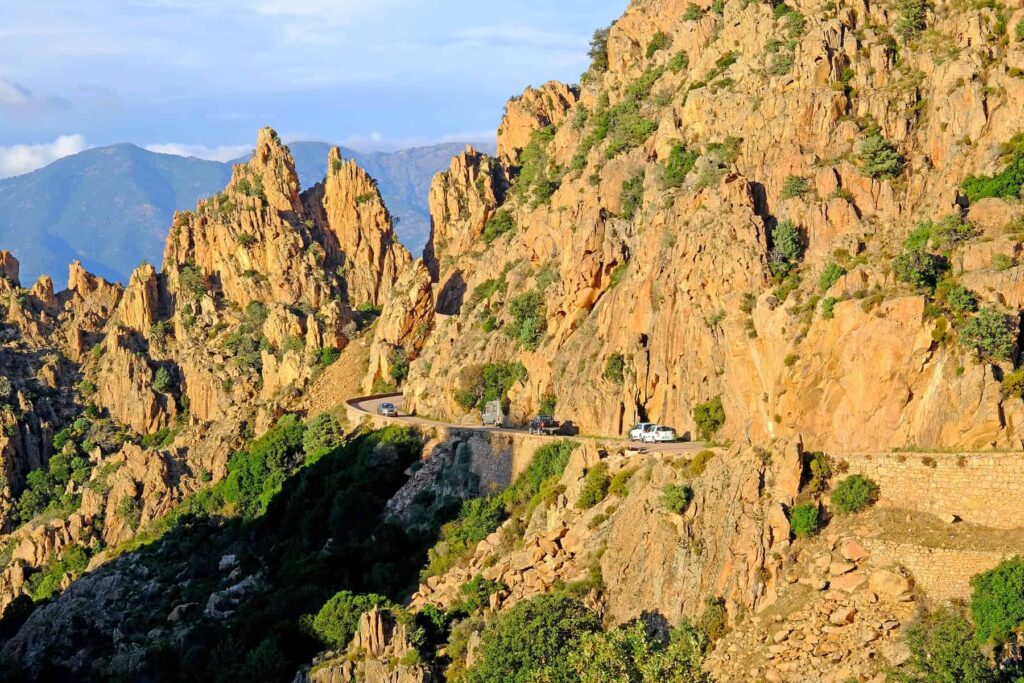
5 CAR RENTAL REQUIREMENTS IN CORSICA
Car hire in Corsica comes with specific requirements designed to ensure your safety and compliance with local regulations. Carefully check the following conditions to avoid last-minute surprises.
1. A VALID DRIVER’S LICENCE
(AND IDP OR TRANSLATION FOR NON-EU CITIZENS HOLDING A LICENCE ISSUED NOT IN FRENCH)
- To rent a car in Corsica, all drivers must produce a valid driving license.
- EU citizens with a valid driving license issued by an EU or EEA country are eligible to rent and drive a vehicle in Corsica, using their domestic documents.
- Non-EU European nationals, such as UK citizens, can use their valid foreign licenses in Corsica for up to 12 months (some countries have other bilateral agreements).
- Non-EU license holders are required to have a notarised translation of the driver’s license in French, or an International Driving Permit (IDP) if the license is not issued in French. The IDP must accompany the original license and serves as an official translation.
- American citizens may apply for the International Driving Permit at the American Automobile Association.
- An international driver’s license in Corsica isn’t required by law, but it is a good idea to get one if you are planning to visit other European countries with different regulations. Always check the requirements in advance with your rental car provider, as different suppliers may have different rules.
2. PASSPORT / IDENTITY CARD
To rent a car, you will also need a photographic identity document- it can be a valid passport (non-EU citizens) or a National ID Card (EU citizens).
3. MINIMUM AGE
The minimum legal driving age in Corsica and throughout France is 18. However, most car rental companies require drivers to be at least 21 years old to rent a vehicle. Some providers may accept drivers aged 18+, but this often comes with restrictions on the types of vehicles available and typically includes a young driver surcharge for those under 25.
4. YEARS OF DRIVING EXPERIENCE
The majority of standard rentals require at least one year of driving experience, while for high-end or luxury cars, you may be asked for 2, 3, or even 5.
5. CREDIT CARD DEPOSIT
To rent a car in Corsica, you will also need a valid credit card in the driver’s name. Your credit card will act as a guarantee, allowing the rental company to place a hold on a security deposit for the duration of the rental. It ensures coverage for potential damages or fees and is released after the car is returned undamaged.
Debit cards such as Visa or MasterCard are sometimes accepted, with potentially higher deposits. This information is stated in the rental conditions.
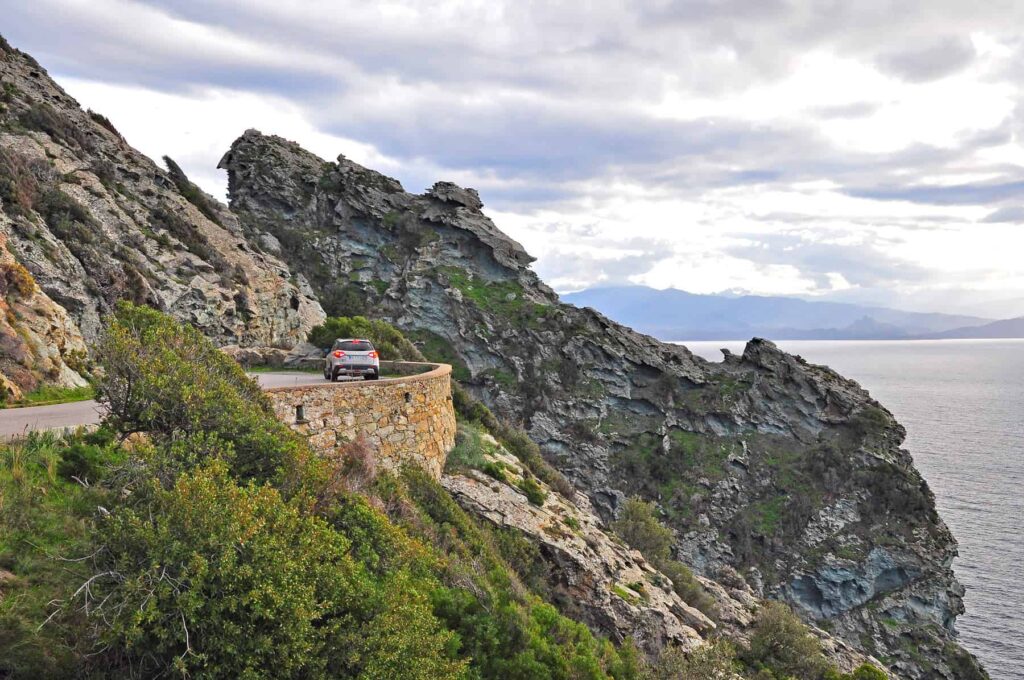
WHY YOU SHOULD BOOK YOUR RENTAL CAR IN ADVANCE?
Secure your rental car in Corsica as soon as your flight or ferry tickets are confirmed to enjoy the best vehicle selection and prices. I would say that early car bookings should take priority over accommodation reservations, which generally have more flexible availability. Discovercars.com offers a free cancellation policy for up to 48 hours before the pickup, giving you plenty of time and peace of mind as you finalise your remaining plans.
- Corsica is a highly popular Mediterranean destination, experiencing a significant influx of tourists from spring through autumn. As a result, demand for rental cars is incredibly high, and the best options tend to disappear quickly.
- Some rental companies offer discounts and exclusive rates only when you book early.
- If you’re looking for a small, budget-friendly car, act fast, as these tend to be booked first. By reserving early, you’ll have a much wider selection in the most affordable category.
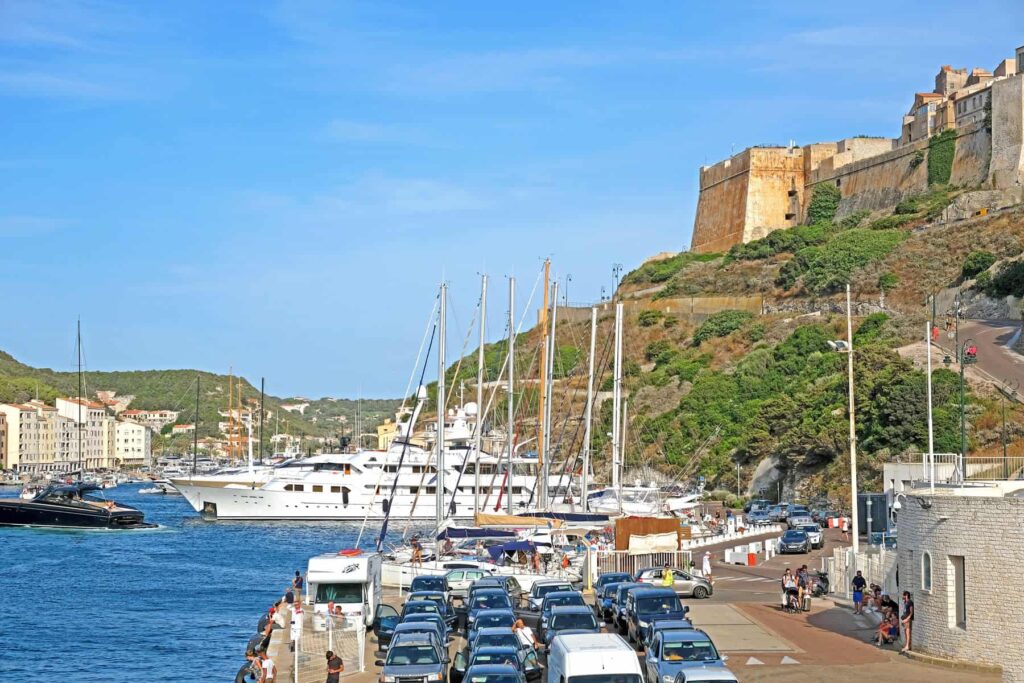
CAN YOU TAKE YOUR RENTAL CAR OFF THE ISLAND?
As a rule of thumb, taking a rental car off the island, either to Sardinia or mainland France/Italy, is not allowed by most companies (although there are exceptions). This is because transporting a rental vehicle on a ferry involves additional risks, significantly expanding insurance considerations and potential fees. However, always check your rental conditions for this information; on the DiscoverCars site, it is communicated in the ‘Planning to travel to another country?’ section of the chosen vehicle‘s offer.
If you’re combining your Corsica trip with a visit to Sardinia, you do have options. You can drop off your vehicle at Bonifacio port before boarding the ferry to Sardinia (Santa Teresa di Gallura) as a foot passenger. The crossing takes about 50 minutes, with foot passenger tickets typically costing under €50. The journey is especially scenic- you’ll have an opportunity to admire stunning views of Bonifacio’s white limestone cliffs and Sardinia’s rocky coastline. For more information, see my post on travel to and from Corsica. You can also read a thorough comparison of both islands to pick your favourite destination.
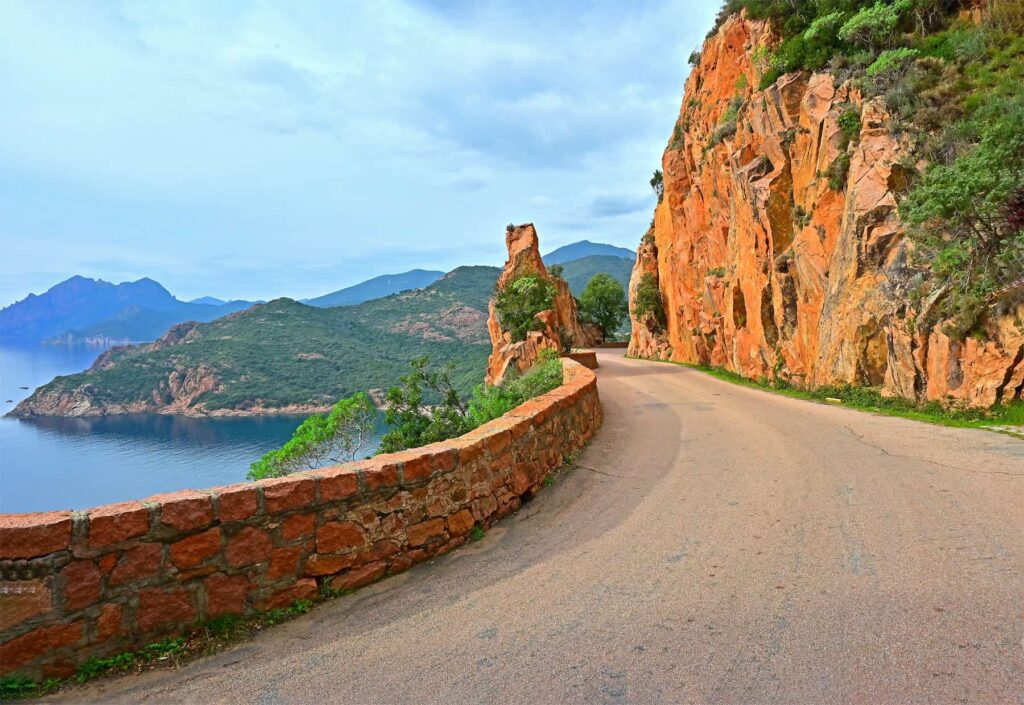
WHERE SHOULD YOU BOOK A CAR FOR YOUR CORSICA TRIP?
Find your ideal car for your island holiday via the Discovercars.com booking platform, a user-friendly site that will allow you to compare rental car deals from numerous suppliers in one place. With a strong reputation for reliability and customer service, they have an impressive selection of well-priced vehicles in Corsica. Discovercars.com is known for:
- Excellent customer reviews and ratings
- Competitive prices for each car category
- Wide selection of rental vehicles
- No hidden costs with all-inclusive prices
- Free booking cancellation for up to 48 hours before pick-up
- Budget-friendly all coverage insurance option
- Convenient and easy-to-use criteria filtering
- 24/7 multilingual customer support
CAR RENTAL LOCATIONS IN CORSICA
In Corsica, you can rent a car in various locations, depending on your plane and ferry connections. It also gives you the flexibility to start and end your road trip wherever it suits your itinerary best, without backtracking. However, keep in mind that picking up your vehicle in one location and dropping it off in another often comes with an extra fee, increasing the overall rental cost.
AIRPORTS
Corsica’s 4 airports, Bastia Poretta (BIA), Ajaccio Napoleon Bonaparte (AJA), Figari South Corsica (FSC) and Calvi Sainte-Catherine (CLY), host offices for major international car rental companies such as Sixt, Avis, Hertz, Europcar, Budget, and others. If you arrive by plane in one of these locations, you will enjoy easy and convenient pickup and return.
PORTS
Visitors who arrive in Corsica by ferry can also rent vehicles in several Corsican ports, such as Bastia, Ajaccio, Porto Vecchio, Bonifacio (useful for travel to and from Sardinia), or Propriano.
CITIES
Several Corsican towns offer centrally located car rental services. Apart from the main cities, Bastia, Ajaccio, Porto Vecchio, Calvi, and Propriano, they include Corte, Bonifacio, and Ile Rousse.
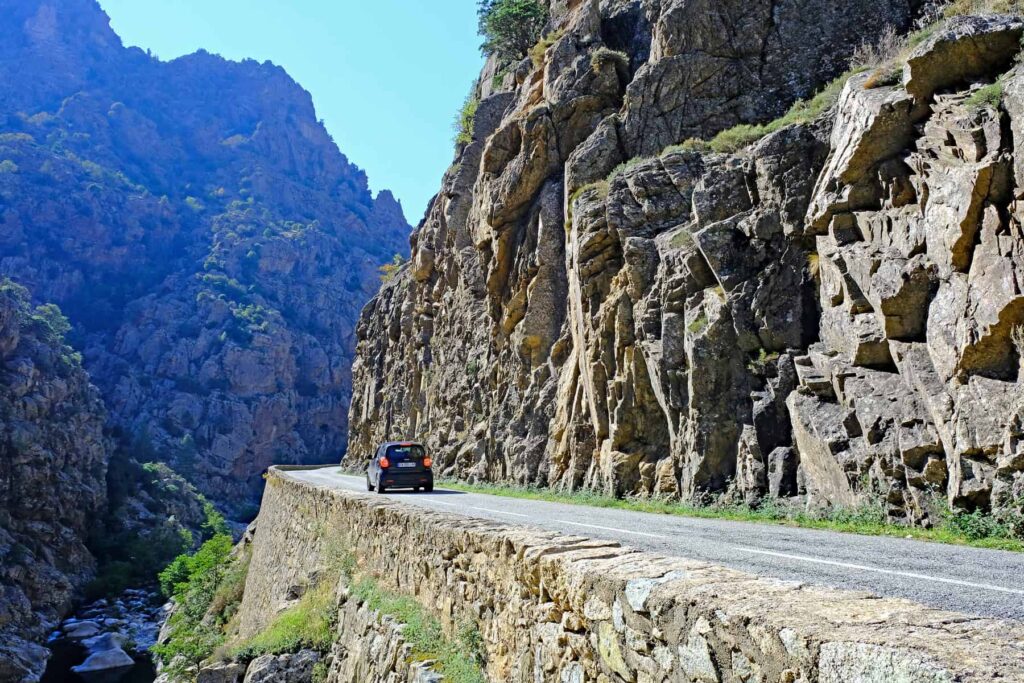
CHOOSING THE RIGHT RENTAL CAR TYPE FOR CORSICA
When selecting a rental car for your Corsican trip, first determine how many people and how much luggage space you will require to ensure comfort. Since Corsican roads are often narrow and winding, pick a car that balances good manoeuvrability and a pleasant ride. Fuel efficiency is also important to help reduce costs, especially if you plan to explore the island extensively.
SMALL CARS FOR NARROW MOUNTAIN ROADS
The ideal car for navigating Corsica is a smaller model that still offers a dynamic drive. With the island’s roads being narrow, winding, and steep, agile handling and compact dimensions will spare you unnecessary stress. In areas like Asco or the Scala di Santa Regina canyon, you’ll value the vehicle’s smaller size, especially when squeezing past oncoming traffic on a tight stretch beside a steep drop-off. A compact car also makes parking easier, especially in peak season when towns and roads are busy with visitors.
FAMILY VEHICLES
For driving with children or a larger group in Corsica, choose a vehicle that comfortably fits everyone with extra space for luggage and child seats. Make sure to reserve the needed safety seats or booster seats when making your booking. In France, it’s a requirement for children under 10 years old.
4WD CARS
You generally won’t need a 4×4 vehicle to drive on Corsica’s roads, although you will most certainly notice that many locals do use them. While a car with raised suspension offers more clearance, making it more comfortable on uneven surfaces, having an off-road vehicle won’t make much difference- rental agreements almost always prohibit driving on unpaved pistes.
There is, however, one exception. In winter, when Corsica’s steep mountain roads are covered with snow, a 4×4 system can greatly improve stability. Personally, I always use a 4×4 in these conditions, as it helps prevent sliding on icy climbs and can sometimes even spare the need for fitting snow chains on the car’s wheels.
CAMPERVANS
Travelling in campervans can be a great way to explore Corsica, but you should pick compact or mid-size models, which are better suited for the island’s narrow, often single-lane roads. Be prepared to plan itineraries carefully, keeping in mind that some parking or camping areas have vehicle height and length restrictions. Spring and autumn are ideal for campervan adventures with fewer cars on the road and more great spots to park and stay.
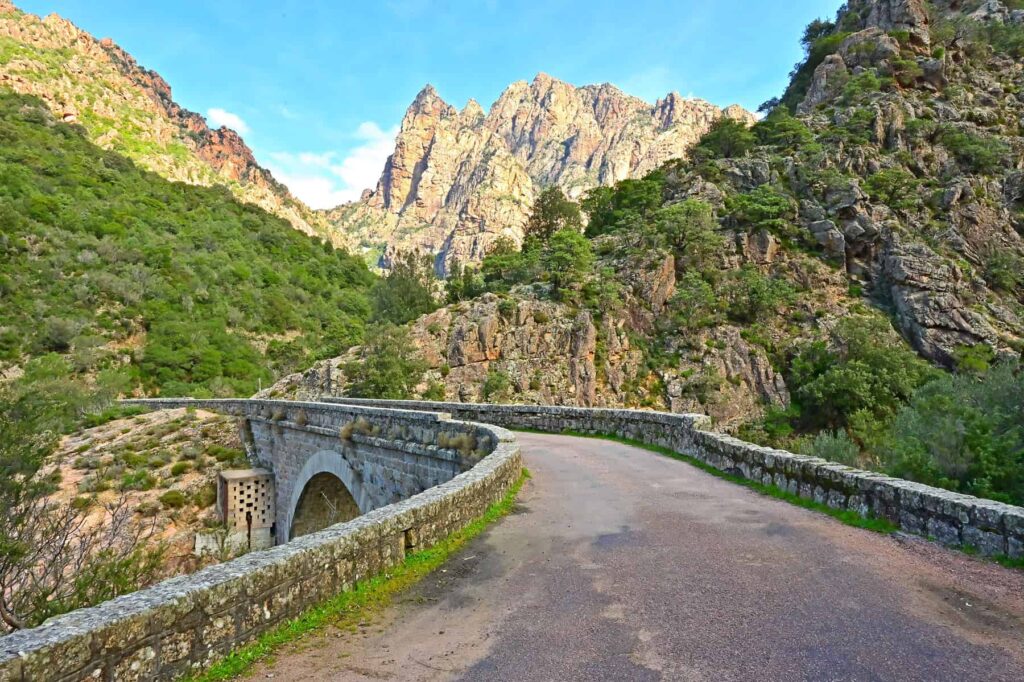
ELECTRIC OR PETROL?
If you can choose, a gas-powered rental vehicle remains the safer bet, but hear me out first. In recent years, Corsica’s electric car landscape has considerably changed. A while back, drivers were faced with an unreliable charging infrastructure and all-too-common range anxiety. Despite a surge of electric rental options on the market, the support network simply wasn’t ready.
Today, charging stations can be found across much of the island, rental fleets offer robust choices, and even locals are trading in their petrol vehicles for electric or hybrid models to tackle shorter, everyday journeys. I would still argue that picking a conventional rental car is a better option for the Corsican hills, but you’ll get by just fine with an electric car if that’s your only choice. However, planning your Corsica itineraries will require a bit more strategic approach.
IMP INFO – Once on the island, you might find that, despite reserving a petrol car, the rental company offers you an electric one instead. This can happen in peak season, when demand for cars in Corsica is at its highest. Fret not and check out my tips for driving an electric car in Corsica for a relaxed, hassle-free experience.
CHARGING INFRASTRUCTURE IN CORSICA
The charging infrastructure on the island has much improved, particularly around the key cities such as Bastia, Ajaccio, and the picturesque Bonifacio, where fast charging stations (eMotum network) are available. Slow chargers are more common but obviously, less convenient for quick top-ups. When you’re booking your hotel, keep an eye out for overnight charging facilities in their car parks.
RURAL AREAS
Outside Corsica’s main towns, charging stations are sparser and often limited to slower chargers. If you’re planning a long-distance road trip, make sure to map out your route and verify the locations and speeds of available charging points in advance.
USEFUL APPLICATIONS
Download a charging application (e.g. Chargemap, PlugShare, E-motum, PlugSurfing) to aid you in route planning. You will be able to locate nearby charging stations, often with real-time availability and pricing information.
SINGLE-CHARGE DRIVING RANGE
When picking up a mid-size electric vehicle, you might be told to expect a range of 300–320 km on a full charge. However, considering Corsica’s mountainous terrain, it’s safer to plan for 250–280 km. The island itself stretches roughly 220 kilometres from the northern tip of Cap Corse to Bonifacio in the south, so this range comfortably covers the long direct route.
Keep in mind that this is Corsica’s only relatively straight and flat road of notable length. In the hilly interior, your range will fluctuate significantly, as climbing consumes more battery power, while driving downhill can actually help regenerate energy.
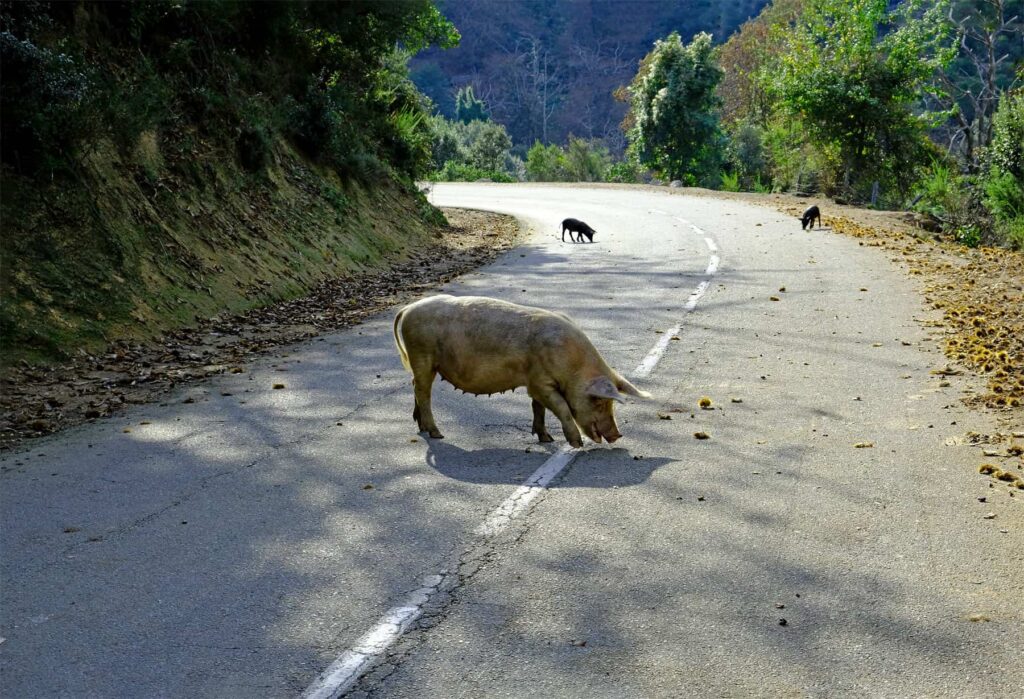
MAKING A CAR RESERVATION WITH DISCOVERCARS
With its easy‑to‑use interface and top ratings from happy travellers, DiscoverCars makes booking simple. But to make your Corsica car rental as smooth and hassle‑free as possible, here are the most important things to consider:
PICK-UP AND DROP-OFF LOCATIONS WITH DATES
Choose convenient location(s) for both pick-up and drop-off, along with dates to check prices and availability. You may choose from several options, such as Corsica’s airports (Bastia, Calvi, Figari and Ajaccio), the port of Bonifacio, Bastia, Porto Vecchio or even the centrally located town of Corte.
PROVIDER RATING 8+
Filter car suppliers to select only those with a rating of 8 or higher for reliable, user-approved service and quality vehicles.
TRANSMISSION TYPE
Specify whether you prefer an automatic or manual transmission based on your preferences and driving style. I’ve used both on the challenging Corsican roads and much prefer the automatic transmission for the ease of use and reduced fatigue. However, it was efficient engine braking in the manual car that saved the day for my husband and me when the brakes gave in on a long and steep mountain descent. Keep in mind that the sooner you book, the better chance you will have access to automatic models.
NUMBER OF SEATS
When picking the number of seats in your rental car, think about everyone’s comfort on your journey, but also remember that in Corsica, the smaller the better, especially for drivers inexperienced in mountain driving.
CHILD SAFETY
Add child safety seats if travelling with the little ones. In the following sections of this article, I explain the French regulations and requirements for safe travel with children.
ADITIONAL DRIVER
When renting a car, adding an extra driver often incurs a fee. All additional drivers must also be present at the rental counter with all required documents and be officially added to the rental agreement to be covered by the insurance.
LIMITED/UNLIMITED MILEAGE OPTION
Decide if you prefer limited mileage (it’s a restrictive but cheaper option) or unlimited mileage to freely explore Corsica without worries. Be warned, though, if you pick limited mileage and exceed the limit, the extra charges can add up quickly, depending on how far you drive over.
FUEL POLICY
Consider the fuel policy in your rental contract- the full-to-full option is usually the best. It means that you pick up and return the car with a full tank.
FULL COVERAGE INSURANCE
Opt for full coverage insurance to minimise your liability to zero or near zero and protect yourself from unexpected costs. In Corsica, challenging roads and higher accident risks make full coverage a smart choice for peace of mind.
Mandatory Civil Liability Insurance, known as Third-Party Liability, is required by law in France and is always included in the rental price. And while it covers damage or injury you cause to others, it does not cover damage to your rental car. For that, you need Collision Damage Waiver (CDW). Reimbursement-based Full Coverage with DiscoverCars includes protection against damage to the car’s body, windshield, tyres, theft, towing, lost keys, administrative fees, and more. It does not, however, cover damage to personal belongings, damage while violating rental terms or laws, interior damage, or off-road damage. The claim process and reimbursement are quick and reliable.
It’s important to note that many credit cards offer rental car insurance when you use them to pay for the rental. However, coverage terms vary widely, so review your card’s policy carefully before relying on it.
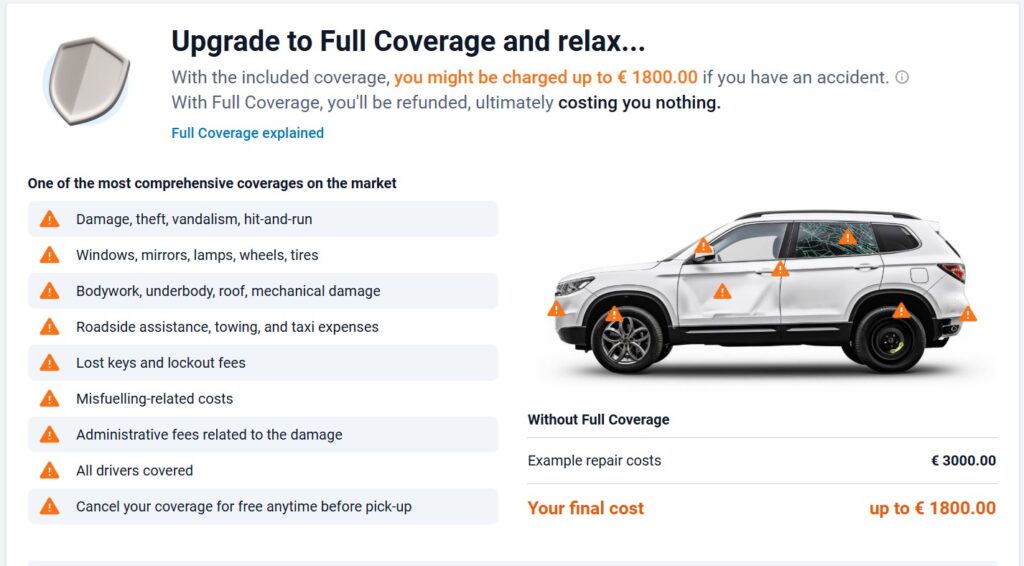
CAR PICK-UP AND DROP-OFF PROCESS
To avoid unnecessary charges or conflicts related to the car condition after your rental period and to ensure safety, here’s what to watch out for:
VEHICLE INSPECTION CHECKLIST
When picking up your car, start with a thorough vehicle inspection, take photos and a video of all surfaces (outside, inside, on the roof, mirrors, etc.) and carefully check for dents and scratches. Confirm the fuel level and mileage with the rental staff, and make sure any existing damage is documented to avoid disputes later.
MANDATORY EQUIPMENT VERIFICATION
Verify that the car is equipped with safety items obligatory in France- a warning triangle, and a reflective vest (must be stored inside the cabin).
RENTAL’S OFFICE HOURS
Plan your pick-up and drop-off times with the office hours in mind. Town-located rental locations may operate according to standard business hours, while airport branches offer after-hours returns with special procedures.
FUEL POLICY COMPLIANCE
Comply with the agreed fuel policy (full-to-full is the best). Most rentals require the vehicle to be returned with the same fuel level as at pick-up. Otherwise, you may face extra refuelling fees at high rates.
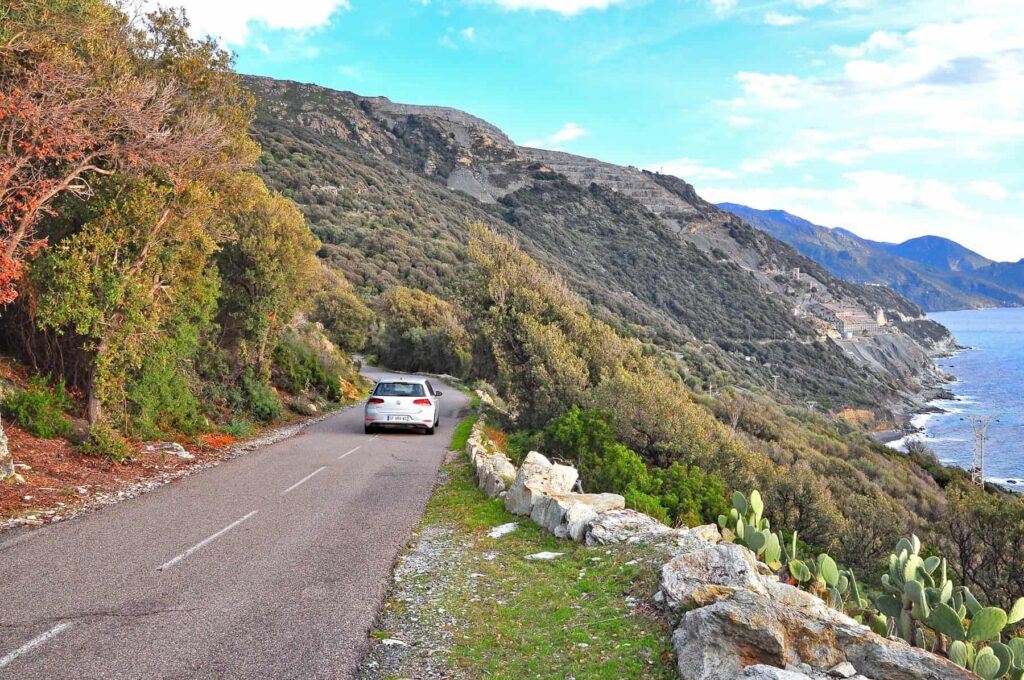
RESOLVING DISPUTES REGARDING DAMAGE OR CLEANING FEES
In case of disputes concerning damage or cleaning fees at drop-off, remain calm and provide your photo evidence to protect yourself against unjust charges. If needed, request a detailed copy of the damage claim, including photos and cost estimates from the rental company. Review the rental agreement, verify what constitutes normal wear and tear.
You can raise a formal dispute with their customer service or the booking platform if you feel the charge is unfair. Make sure to include your evidence and act promptly, as there is always a defined time frame for official complaints.
Remember that full coverage insurance reduces or removes your financial responsibility, minimising arguments with the provider over repair or cleaning fees. If you purchased one, either directly from the rental company, via a credit card, travel insurer, or a car booking platform, you can file a claim with them to have the damage/cleaning charges paid for or reimbursed after the investigation.
USEFUL TIP – Since insurance policies vary, always carefully review your coverage details. Credit card rental protection is often more limited and may exclude certain countries.
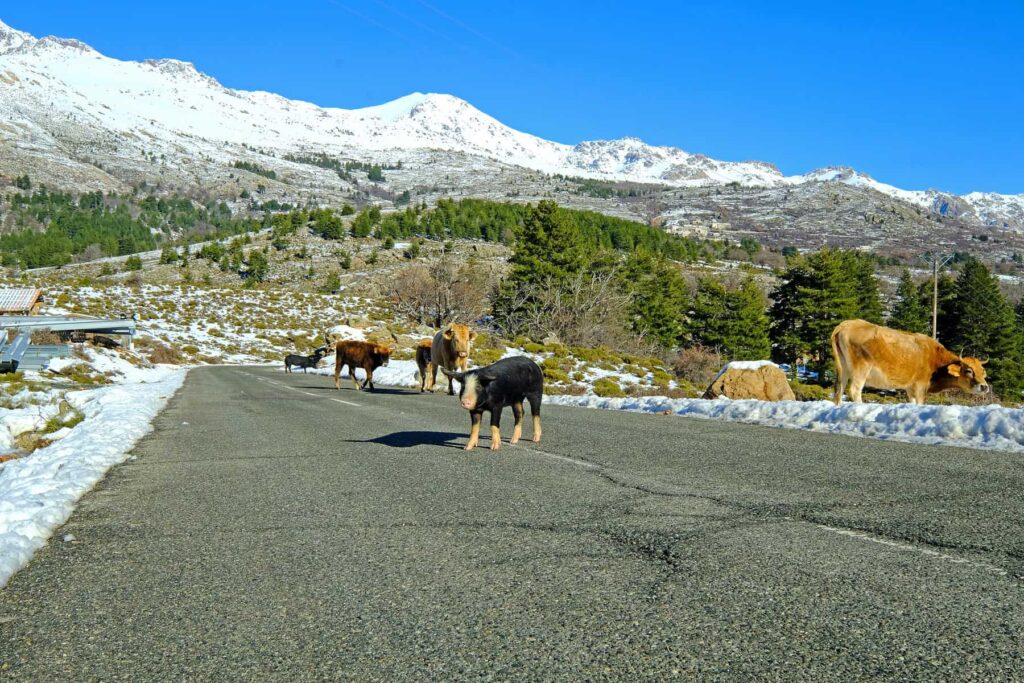
WHAT IS THE COST OF RENTING A CAR IN CORSICA?
- Corsica car rental prices depend on the season, location, the provider, and car type, ranging, on average, from €30 to €80 per day.
- The cheapest are economy cars, which may cost under €35 per day.
- For a compact or mid-size vehicle, you will pay around €35-€50.
- Larger and premium cars can cost anywhere from €50 to €100 per day.
- Prices rise notably in July and August. Early booking assures a better deal.
HOW TO GET A CHEAP RENTAL CAR IN CORSICA?
- Book early, even several months before your trip to Corsica. Last-minute rentals are always more expensive.
- Travel in shoulder season or off-season to get the best deals. July and August are the most expensive months on the island.
- Return the car to the same location where you picked it up. Dropping off your rental vehicle at a different place can incur an additional fee.
- Pick a small, economy category vehicle. It’s not only cheaper but also more suitable for the narrow Corsican roads.
- Choose week-long rentals, which usually offer better value than renting a car for just a few days.
- Use a credit card that offers rental car insurance to avoid additional coverage costs.
- Consider opting for the more affordable ‘limited mileage’ option when booking if you plan to do minimal driving around the island. However, it is crucial to carefully check the allowed number of kilometres and the fees for any additional kilometres to avoid unexpected charges (they can be high).
- Pay attention to cancellation policy fees.
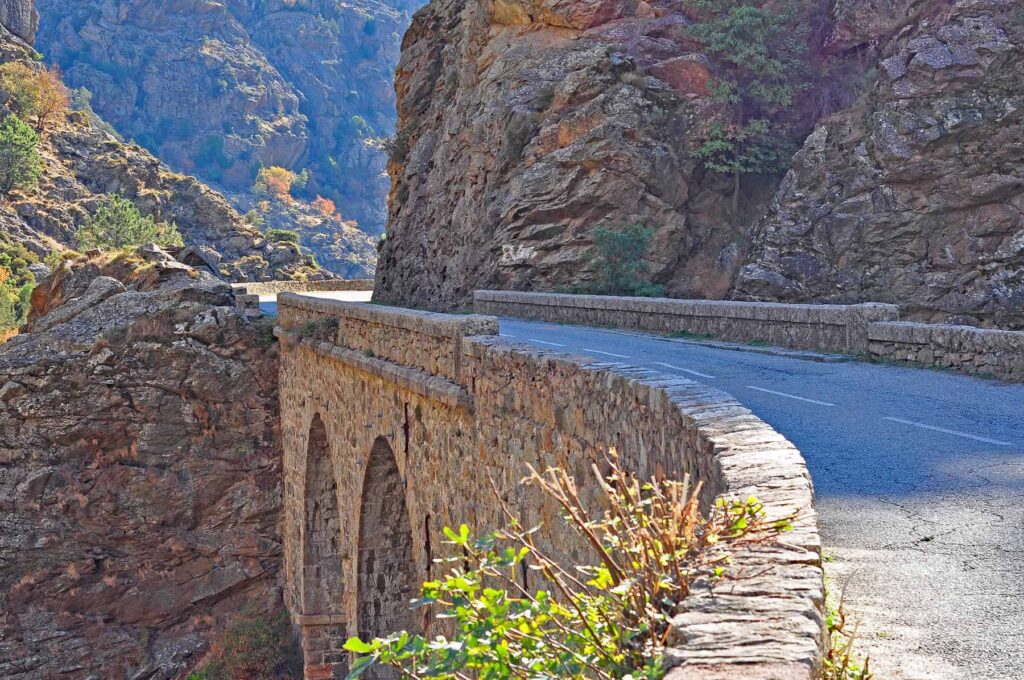
ROAD RULES IN CORSICA
When exploring Corsica and its scenic roads, you will have to adhere to specific road rules and regulations that ensure safety for all. Keep in mind the following:
DRIVING SPEEDS
- 50 km/h in built-up areas, often reduced to 30 km/h in villages.
- 80 km/h on regional roads outside urban areas.
REQUIRED CAR EQUIPMENT
- A fluorescent safety vest in the cabin.
- A hazard warning triangle (to place on the road in case of breakdown or accident).
- From 1 November to 31 March in Corsica’s mountainous areas, it is mandatory to equip your vehicle with either winter tyres or carry snow chains for at least two driving wheels.
- Breathalysers are no longer mandatory.
PRIORITY RULES
At intersections without traffic lights or with flashing orange lights, priority is generally given to traffic coming from the right (priorité à droite), unless otherwise indicated by priority signs (yellow diamond), roundabout rules, or stop/give-way signs.
CHILD SEATS
In France, children under 10 years old must use a child safety seat adapted to their age, weight, and height. They are required to travel in the rear seats unless the car has no rear seats or they are fully occupied by other children under 10.
Infants under 9 kg must be in a rear-facing car seat, ideally placed in the rear seats. Children between 9 kg and 18 kg need a forward-facing car seat with a harness, and from 15 kg to 36 kg must use a booster seat until they reach 135 cm in height.
BELTS
Wearing seat belts is mandatory for all passengers in the vehicle, both in front and rear seats. Failure to wear can result in a €135 fine and a 3-point penalty.
ALCOHOL LIMIT
The legal blood alcohol limit for driving in France is 0.5 g/l (while for young or provisional license holders, the limit is further reduced to 0.2 g/l). It means that essentially any alcohol consumption can put you over the limit. The fines and penalties are heavy, and the law enforcement officers are very strict.
TOLLS
Corsica’s road network is free to use, without any tolls.
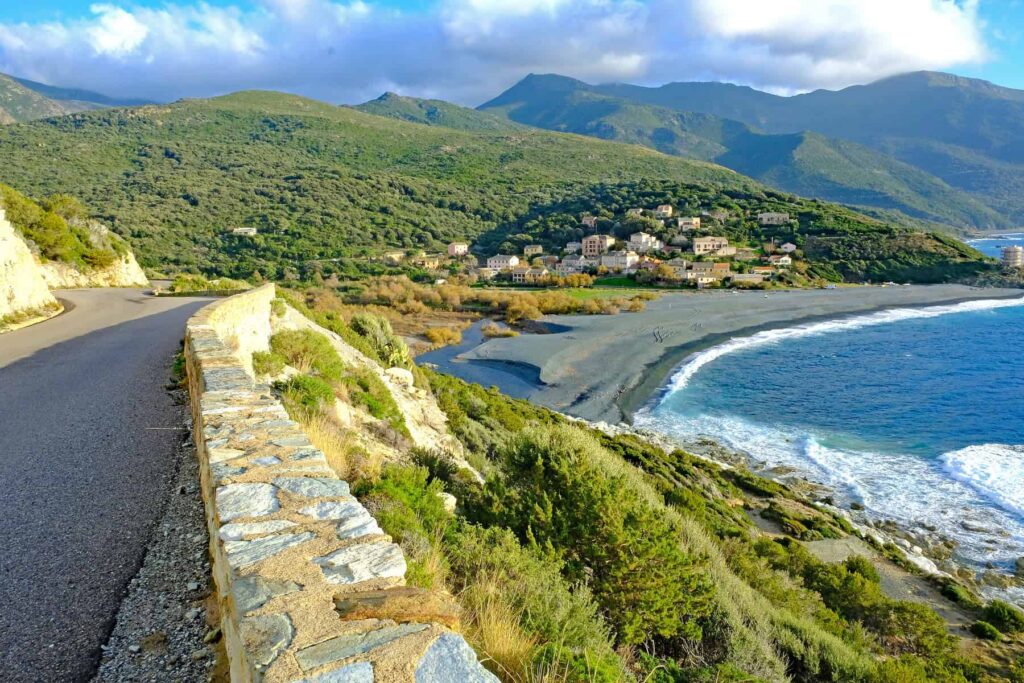
ROAD CONDITIONS IN CORSICA
- In the past, the Corsican roads were often surfaced with worn, potholed tarmac, but over the last decade their quality has improved greatly, and today they are generally in excellent condition.
- Aside from the long Bastia – Bonifacio stretch and fast approaches to the biggest towns, Corsica’s roads are all about tight curves, narrow lanes, and dramatic landscapes. A true dream for sightseers and a test for drivers.
- Some mountain roads have single-track bridges and sections flanked by steep cliffs or drop-offs, requiring attention and slow speeds.
- Road surfaces on secondary and rural routes may have gravel or sand patches. Slow down to avoid skidding and losing control of your vehicle.
- In villages and towns, you will encounter many speed bumps to enforce low speed limits (often 30km/h).
- Heavy rainfall can leave roads littered with loose rock or broken branches. Although debris gets cleaned up quickly by the local services, exercise extra caution.
PRO TIP – If you are a passenger, avoid checking your phone or reading on Corsica’s winding roads, as it can cause instant nausea. Choose a front seat, as it is generally less likely to trigger discomfort than the back seats, and keep motion medication handy.
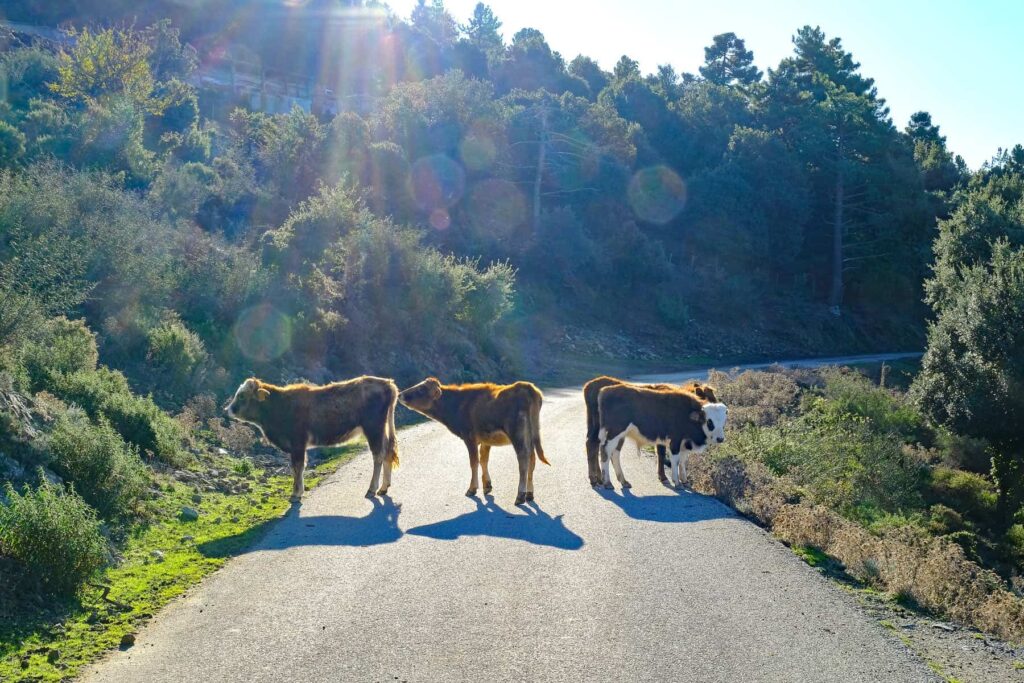
MAIN HAZARDS ON THE ROADS
- The Corsican road topography, winding, narrow lanes with sharp bends, is the main challenge. These conditions require careful attention and adapted speeds.
- Livestock and wildlife, such as cows, pigs, sheep, goats or wild boar, are a common occurrence in the rural areas and mountain passes. At night, the risk of encountering animals is even greater.
- In high season, the roads may become congested, particularly in the most scenic areas. The Calanches de Piana or Bavella drives attract drivers, bikers, cyclists and even hikers.
- Some access roads to popular tourist locations, like the stunning Roccapina beach, are unpaved and potholed.
- More remote and wilder places, such as Cap Corse, offer limited access to petrol stations or charging points.
- Weather conditions in the Corsican mountains can change very rapidly, making the steep zigzags particularly hazardous due to wet, slippery surfaces from rain and reduced visibility. Always check the latest forecast before setting out.
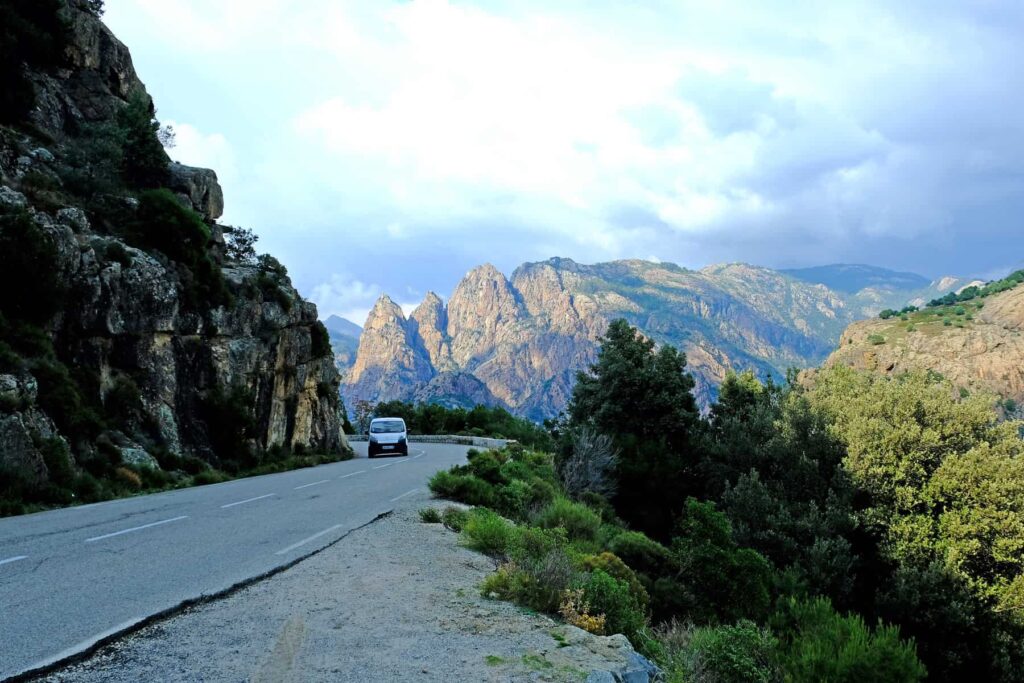
ETIQUETTE AND LOCAL DRIVING STYLE
- While I recommend driving slowly and cautiously, local drivers often do the opposite. Accustomed to the island’s endless narrow bends, they frequently drive fast in risky spots, using the middle of the lane to maintain speed.
- At other times, you might find yourself stuck behind a driver who has stopped in the middle of the road for a friendly chat with someone they’ve spotted. These roadside meetings can last several minutes, especially in small villages. In such cases, it’s best to wait patiently rather than honk your horn- doing so is unlikely to speed things up.
- One situation where using your horn can be very helpful is when approaching a blind bend on a narrow or exposed road. A short beep can alert oncoming traffic to your presence.
- If you are especially cautious or nervous on Corsican roads and prefer to drive very slowly, allow faster traffic behind you to pass by, pulling into the next safe lay-by for a brief stop.
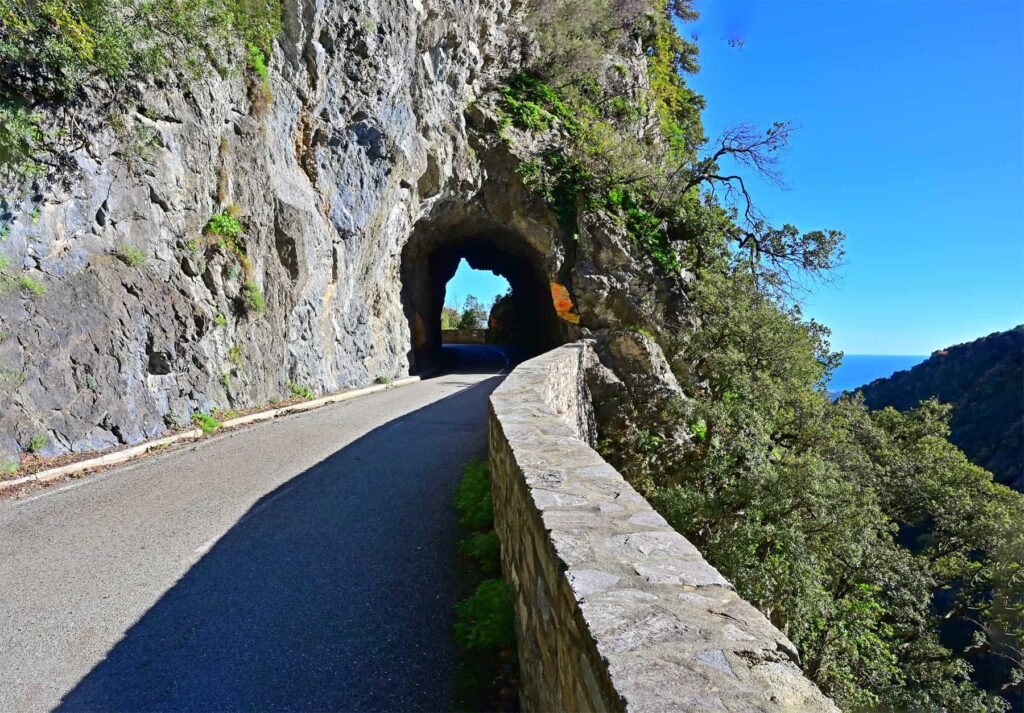
CAR TRAVEL TIMES IN CORSICA
In Corsica, several factors affect travel times, including the terrain’s topography, seasonal traffic, and proximity to popular tourist hotspots or major towns. If you’re not accustomed to mountain driving, you’ll likely proceed more cautiously, and you may also find yourself captivated by the island’s spectacular scenery and abundant natural beauty.
As a general rule, plan for journeys to take longer than your GPS suggests. Average driving speeds are around 35 km/h, except when travelling along the flat east coast plains, where you cover ground faster.
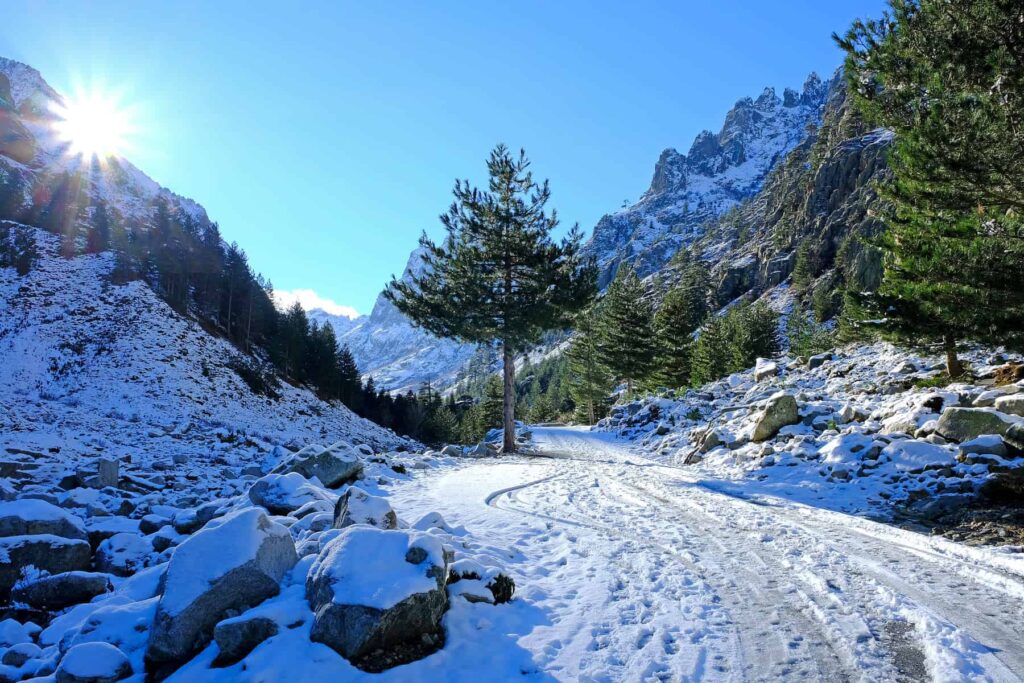
FUEL PRICES IN CORSICA
- Fuel in Corsica is generally more expensive than on the French mainland.
- Petrol prices are higher than those for diesel.
- Prices can vary noticeably between stations, even within the same town or village. For the best deal, compare a few local garages.
- In my experience, Vito stations often offer the most competitive prices.
- These stations always offer great deals on car fuel- Station Vito U Strettu Baleone on T20 before Ajaccio, Station Vito on RT10 in Alistro, south of Bastia, and Esso – le Relais du San Pedrone on T20 in Ponte Leccia, in central Corsica.
USEFUL TIP – When refueling in Corsica, look for gazole for diesel cars and sans plomb for petrol vehicles. Make sure to check your car’s manual and the pump label.
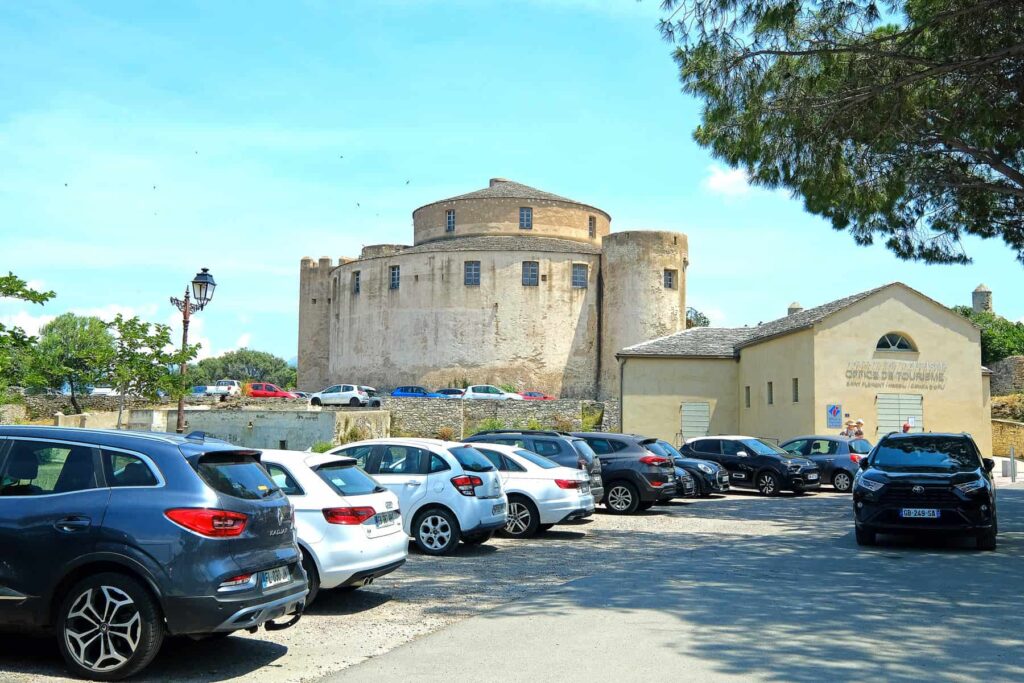
PARKING YOUR RENTAL CAR IN CORSICA
Outside of the main tourist season, finding a car space in Corsica is usually easy, except for central Ajaccio and Bastia. In summer, however, parking becomes a real challenge in popular spots, such as the centres of major towns, near famous beaches, and close to well‑known natural attractions.
Since parking regulations in France are set locally, rules and fees vary from one municipality to another. For example, until recently, drivers could park along the roadside on the scenic Bavella stretch, but during the high season, the yellow‑marked zone is now off‑limits, replaced by large paid car parks. Similarly, at Calvi’s glorious beach, fees are now charged during peak months.
In some cases, town authorities create special seasonal parking areas to cope with demand, such as the large free-of-charge field on the western approach to Saint‑Florent, a town otherwise notorious for its scarcity of spaces in summer.
I cover specific parking tips in each city guide, but here are some universal rules to keep in mind wherever you go.
- Many Corsican towns have paid parking areas (often marked blue) where you buy a ticket from a meter or a machine. Always display your ticket to avoid the fine.
- A solid yellow line means a ban on both stopping and parking, while a broken one allows you to stop briefly.
- Parking in places that block driveways, emergency lanes, bus stops, and electric charging points is illegal.
- Early arrival at a popular location will make finding a parking space much easier.
- Parking fees vary depending on the location. Supermarket or shopping centre parking areas are free of charge.
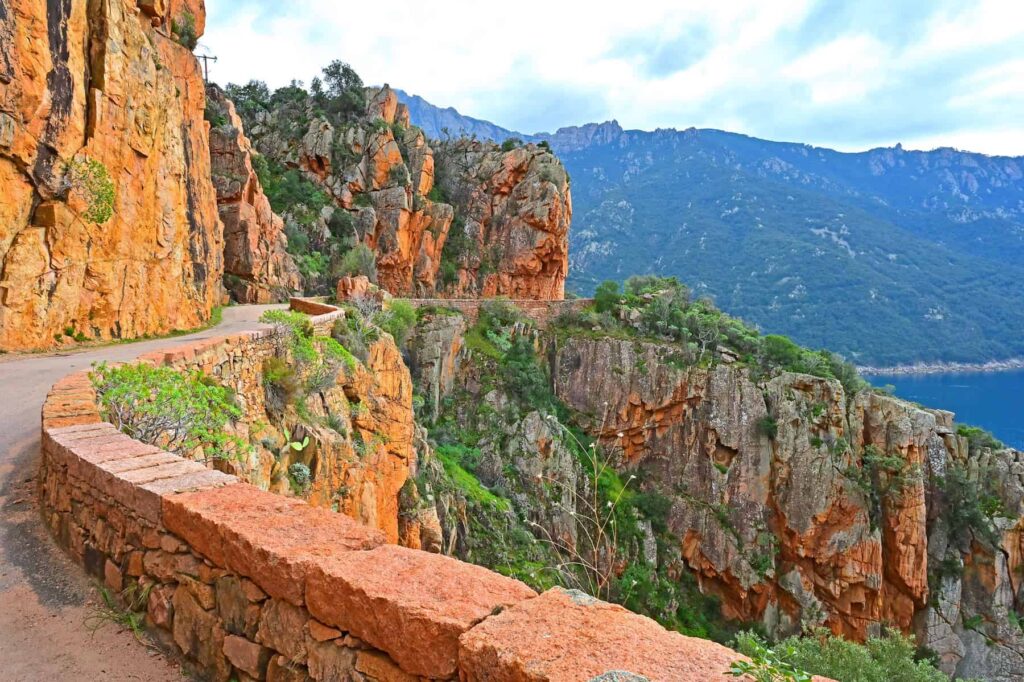
HANDLING FINES AND TICKETS
In Corsica, visitors are subject to the same rules as residents when it comes to traffic fines and parking tickets. Personally, I have never received a parking ticket on the island, but speeding cameras and police controls are common along Corsican roads. Unfortunately, Corsica has a notably high accident mortality rate (the locals drive fast), so it is crucial to adhere strictly to traffic rules for your safety.
- Fines usually result from parking violations or speeding. Parking tickets start at €35, while speeding fines at €135.
- If you receive a fine from a traffic camera, a notice, called Avis de Contravention, is sent to the car’s registered owner. If you rented a car, the rental company will receive the fine and then charge you, with an added administrative fee (€20-€50).
- If you pay the fine within 15 days, the amount is usually reduced, but once you exceed 45 days, you will have to pay a much higher sum.
- For licenses outside the EU, points can’t be applied, which is not necessarily the case for EU license holders, as information may be shared.
- You can pay the fine at the police station or online on the official government site amendes.gouv.fr.
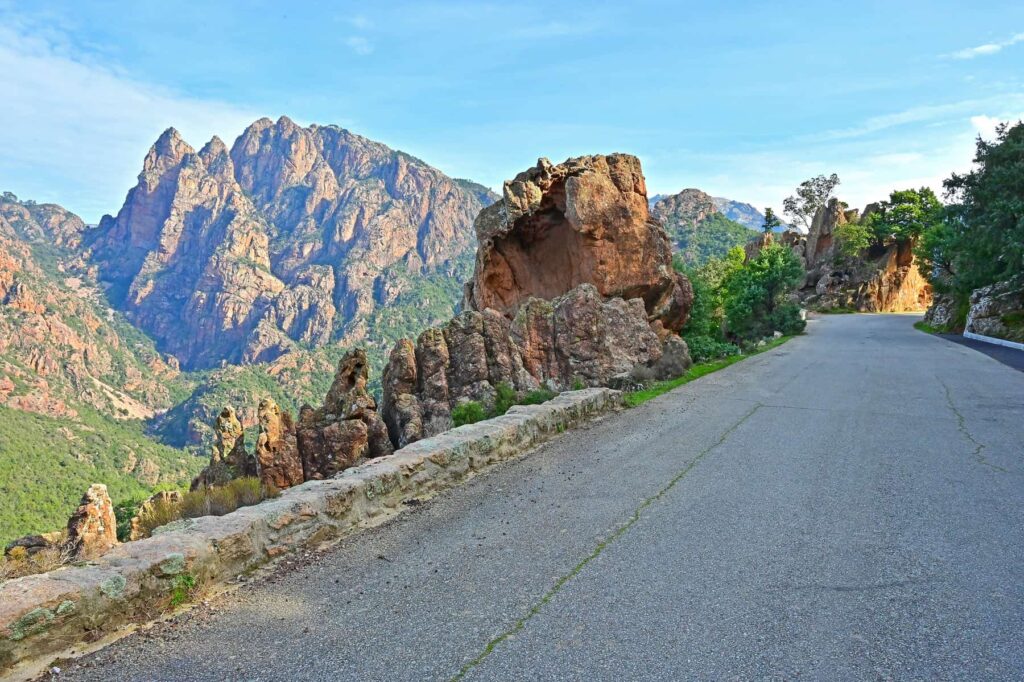
WHAT TO DO IN CASE OF EMERGENCIES, ACCIDENTS AND BREAKDOWNS
- In case of a serious emergency or accident, call 112. It’s a Europe-wide emergency number. For medical assistance, call SAMU, dial 15, or alternatively 18; it’s a fire brigade, but in Corsica, they are often first to arrive. Call 17 to reach the police.
- Provide detailed information- your name, phone number, exact location or address, and nature of the emergency.
- Turn on hazard lights, use a warning triangle, and wear a reflective vest if you must exit your vehicle on the road.
- For minor accidents, it is enough to exchange contact and insurance details with the other person, and if available, fill in constat amiable, an accident report document used in France.
- If your car breaks down, contact your rental company’s roadside assistance number or a local breakdown service.
- If you witness an accident, help if it’s safe, and call emergency services.
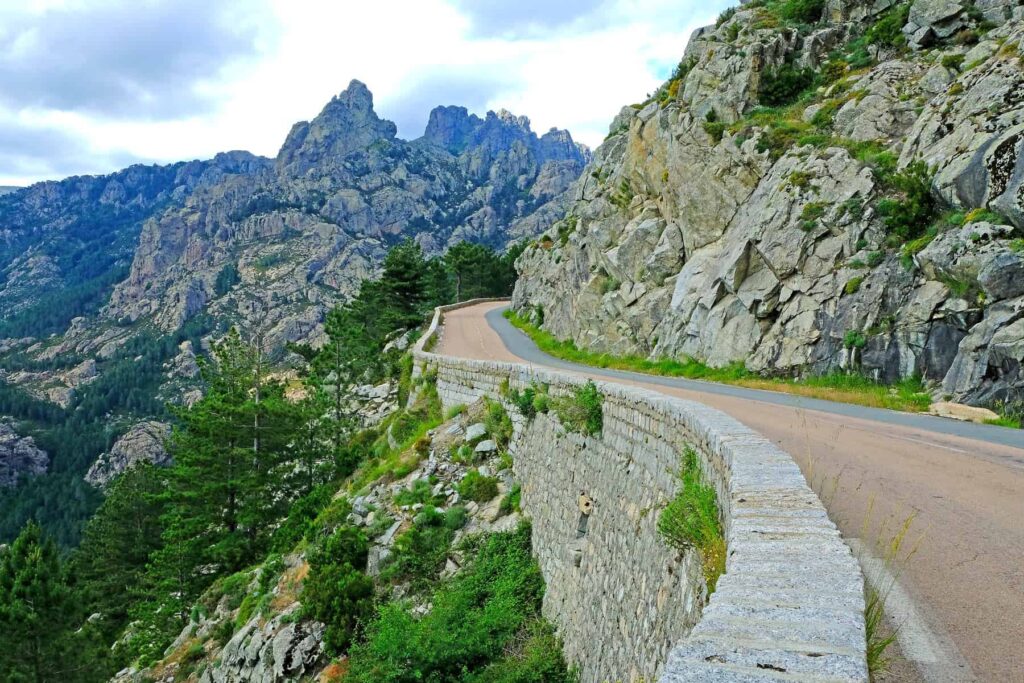
IDEAS FOR SCENIC DRIVES
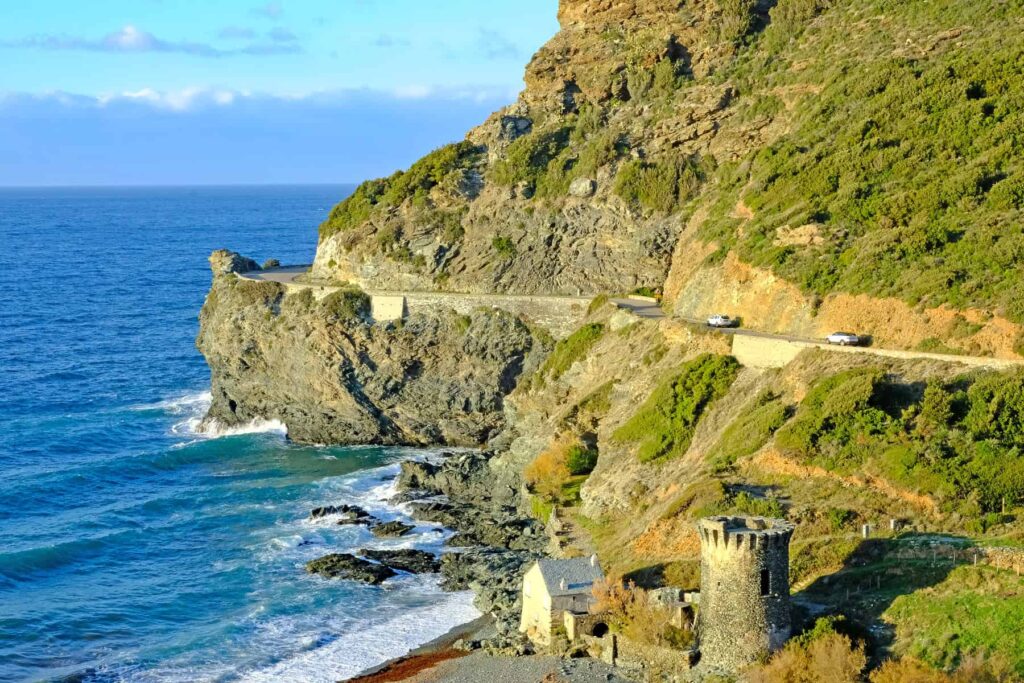
YOU MAY ALSO LIKE
- Where to stay in Corsica – best places and areas for your visit
- Corsica’s best beach hotels and top coastal locations
- Best places to stay in Corsica for couples
- Ferries to Corsica – practical guide to booking your crossing with Corsica Ferries
- Corsica – where to go and what to do
- 11 Charming Corsican villages that will steal your heart
- Visiting Corsica – how to get there
- Is Corsica an expensive travel destination – money guide for visitors
- Getting around Corsica – do you need a car?
- Don’t expect this in Corsica – 20 surprising facts for visitors
- Best things to do in Corsica with children
- 30 Summer fairs, festivals and events in Corsica
- 25 Instagram-worthy places in Corsica for stunning photos
- Top 3 destinations for a car-free holiday in Corsica
- Top 11 most beautiful places in Corsica
- 15 Hidden gems in Corsica – discover the island’s best-kept secrets
- Best time to visit Corsica
- Is Corsica a safe place to visit – travel advice and tips
- What to avoid in Corsica – 11 common mistakes
- 15 Best beaches in Corsica for lovers of sea, sun and sand
- Driving in Corsica – tips and scenic routes ideas
- Visiting Corsica in winter – the ultimate travel guide
PLANNING A TRIP TO CORSICA? CHECK OUT THESE RESOURCES!

